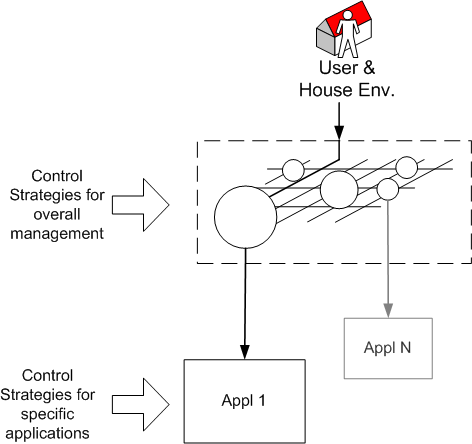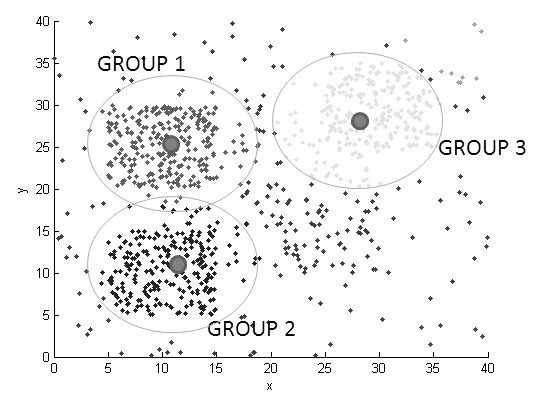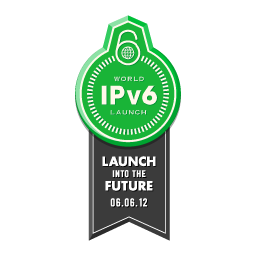|
ThinkHome pursues the realization of intelligent smart home
designs focused on the carefully integration of semantic context and artificial intelligence algorithms. The advanced intelligence is realized by means of control strategies
that are embedded and cooperate fairly within the highly interoperable
ThinkHome system structure that provides transparent access to data,
users, building systems, and miscellaneous other services. Therefore, control
strategies are the core part of the intelligent operation of a
ThinkHome building. They are responsible for the calculation of all
actions (switching commands, start/stop times and many other parameters)
that are executed by the underlying building automation systems. The
control strategies are implemented in a dedicated agent. Hence, they are
embedded in the agent framework and can access all information that is
available in the system, either directly, by communication, or even by
cooperation with other agents. In the ThinkHome
project, control strategies are simultaneously considered from two
different levels of operation. On one hand, they cover the
implementation of advanced algorithms that fulfill specific applications
(e.g. thermal comfort of a room, advanced lighting, etc.), but also the
definition of approaches for the joined management of the smart home as
a whole (e.g. conflict resolution, priority definition, rules of
cooperation, etc.). The boundaries of these two perspectives are not
always clearly defined, but the underlying structures formed by the
multi-agent system and the knowledge base allow to face the challenges
in a fluid and flexible manner, providing profitable feedbacks for
building productive and global context awareness 
Application of control strategies at different levels
One of the more remarkable points that characterizes ThinkHome developments is the deployment of behavioral profiles
for the creation of adaptable controllers. Here, context is abstracted
by common behaviors and usages existing in the home environment, thus
the smart system is able to build an internal representation
map for the current scenario. Diverse controllers cooperatively
share this information and take it into account to make accurate
decisions in their own domains.
Artificial intelligence is demanded at different levels, starting already with techniques for the behavioral pattern discovery (developed
using adavanced data mining and clustering techniques), which must be
customized and adapted to the particular features of the home use cases.

Discovering behavioral patterns within data collected from the home environment
· Publications: The
next publications developed in the ThinkHome project deal with control
methodologies and strategies for home applications. -Félix Iglesias Vazquez and Wolfgang Kastner. Usage profiles for sustainable buildings. In Proc. of the 15th IEEE Conference on Emerging Techonologies and Factory Automation (ETFA' 10), pages 1-8, September 2010. [ bib | DOI | Abstract ]
-Christian
Reinisch, Mario J. Kofler, Felix Iglesias, and Wolfgang Kastner.
ThinkHome: Energy Efficiency in Future Smart Homes. EURASIP Journal on Embedded Systems, 2011:18, 2011. [ bib | .pdf ] -Félix Iglesias Vázquez and Wolfgang Kastner. Clustering methods for occupancy prediction in smart home control. In Industrial Electronics (ISIE'11), IEEE International Symposium on, pp. 1321-1328, 27-30 June 2011. [ DOI ]
-Félix Iglesias Vázquez, Wolfgang Kastner and Christian Reinisch. Impact of user habits in smart home control. Emerging Technologies & Factory Automation (ETFA), 2011 IEEE 16th Conference on, pp. 1-8, 5-9 Sept. 2011. [ DOI ] -Félix
Iglesias Vázquez, Sergio Cantos Gaceo, Wolfgang Kastner and José
A. Montero Morales. Behavioral Profiles for Building Energy Performance
Using eXclusive SOM. ENGINEERING APPLICATIONS OF NEURAL NETWORKS, IFIP Advances in Information and Communication Technology, 2011, Volume 363/2011, 31-40. [ DOI ] -Félix
Iglesias Vázquez, Wolfgang Kastner, Sergio Cantos Gaceo and
Christian Reinisch. Electricity load management in smart home control. 12th International IBPSA Conference, Building Simulation 2011, to appear, 14-16 Nov. 2011.
|















